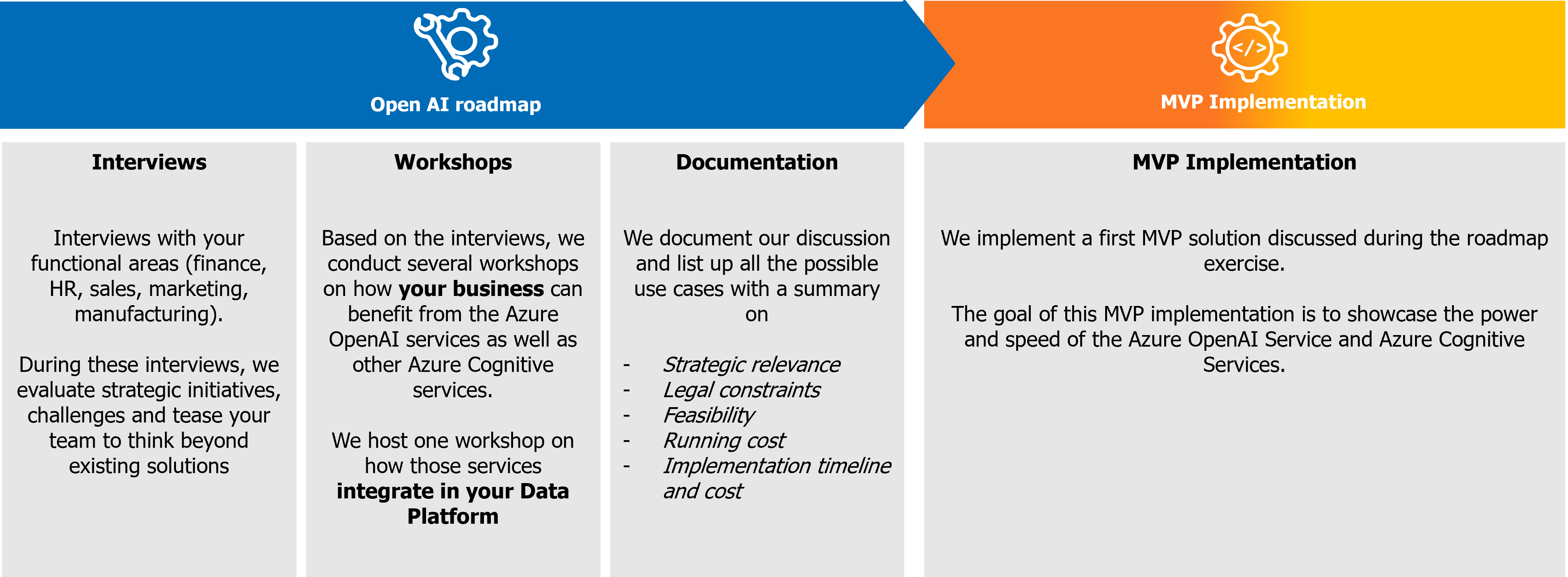Generative AI...
In early November 2022, this term was only known to several people worldwide.
On 20 November 2022, OpenAI released ChatGPT to the world and all of a sudden, everyone was talking about Generative AI.
Everyone's eager to get started in setting up a use case with generative AI but let's take a step back. Let's dive deeper into what it is, and how it can help you as a company in your operations.
What is it
Generative AI is a type of artificial intelligence technology that broadly describes machine learning systems capable of generating text, images, code, or other types of content, often in response to a prompt entered by a user.
Generative AI uses a complex computer technique called deep learning. It looks at lots of data to find common patterns and then uses this info to make new things that seem real. It does this with the help of machine learning tools called neural networks, which work a bit like how our brains learn things by processing information bit by bit.
What types of generative AI exist
Multiple types of generative AI can be used. Below you can find three common types of Generative AI.
-
Generative Adversarial Networks (GANs): GANs consist of two neural networks, a generator, and a discriminator, competing against each other. The generator creates content, while the discriminator tries to distinguish it from real content. This adversarial process leads to the generation of increasingly realistic and creative output.
-
Recurrent Neural Networks (RNNs): RNNs are used for sequential data generation, making them suitable for tasks like text generation and music composition. They maintain a hidden state that allows them to remember previous inputs and generate coherent sequences.
-
Transformer Models: Transformer-based models like GPT (Generative Pre-trained Transformer) have gained popularity for their ability to generate high-quality text. They are pre-trained on massive datasets and can be fine-tuned for specific tasks, such as chatbots or content generation.
Examples of generative AI applications are:
- ChatGPT: An AI language model developed by OpenAI that can answer questions and generate human-like responses from text prompts.
- DALL-E 2: Another AI model by OpenAI that can create images and artwork from text prompts.
- Google Bard: Google’s generative AI chatbot and rival to ChatGPT. It’s trained on the PaLM large language model and can answer questions and generate text from prompts.
- Midjourney: Developed by San Francisco-based research lab Midjourney Inc., this gen AI model interprets text prompts to produce images and artwork, similar to DALL-E 2.
- GitHub Copilot: An AI-powered coding tool that suggests code completions within the Visual Studio, Neovim and JetBrains development environments.
- Llama 2: Meta’s open-source large language model can be used to create conversational AI models for chatbots and virtual assistants, similar to GPT-4.
What can you do with it
The possibilities are endless and your imagination is the limiting factor in this case. Below we have listed some use cases that we've encountered in the last few months where generative AI can have a valuable impact on your business processes:
-
Internal enterprise search and Q&A: Provide your employees with more relevant information at the right time with an internal chatbot and Q&A system. Employees can ask questions on all your internal documents (HR, S&OP, ...)
-
Support maintenance engineers: Maintenance engineers who are performing service visits are typically scanning through a lot of documents to resolve the problem. They need to keep in mind versions of the software, and any historical patches, ... By indexing all this information, service engineers can ask the problem they are facing and will get back a step-by-step plan.
-
Financial Due Diligence: In financial due diligence, analysts are typically scanning through a large number of documents. By asking for a summary of each document with a focus on due diligence, the analysts have all the necessary information at their fingertips.
-
Documentation generation: A tedious task when finalizing a project is generating documentation for all the code you've written. By using generative AI, you can generate comments for all the code you've written making this task super swift. (Automated Documentation in Power BI with Azure OpenAI | element61)
Do you have any more ideas, feel free to let us know and we can help you build it on your environment.
How to get started with Generative AI
Building a generative AI solution for your business might seem overwhelming. At element61, we can support you in the full process of ideation to MVP to a full production-ready solution.
We apply our Roadmap methodology to capture needs, ambitions, and challenges, create a realistic view of the timeline and (running) cost, and implement a working solution. As an example of such a roadmap, you can find more information on our Azure Open AI Roadmap | element61.

Contact us to learn more
Are you interested in getting started with the Azure OpenAI services?
Do not hesitate to contact us for more information.

Continue reading...
Are you interested in finding out how you can get started with chatting on your own data? Check our webinar on Webinar: How to leverage Azure OpenAI on internal documents & beyond? | element61